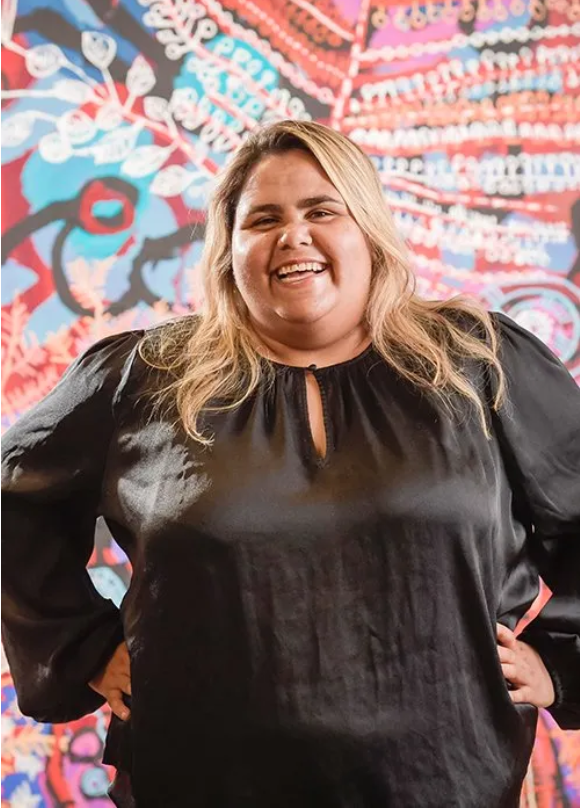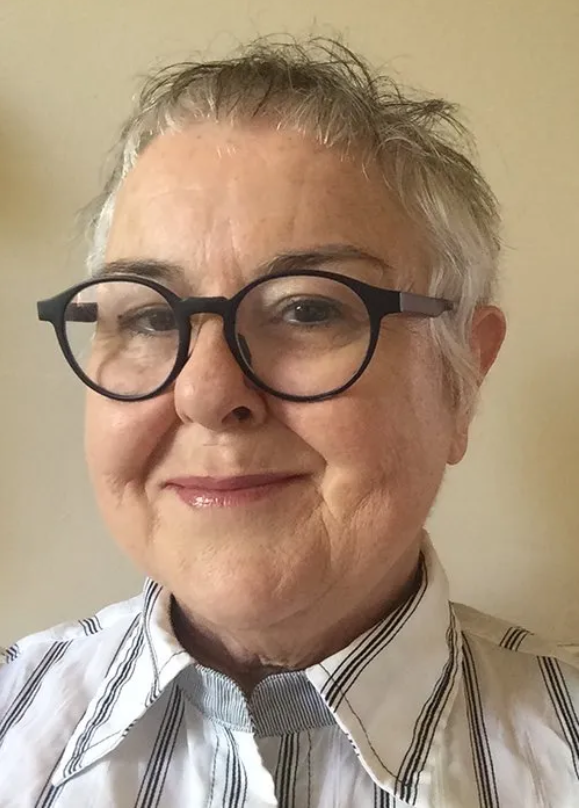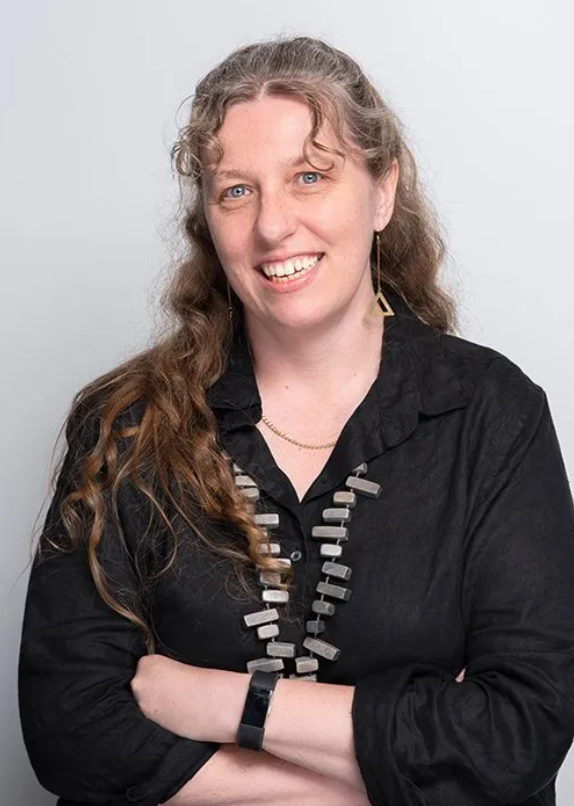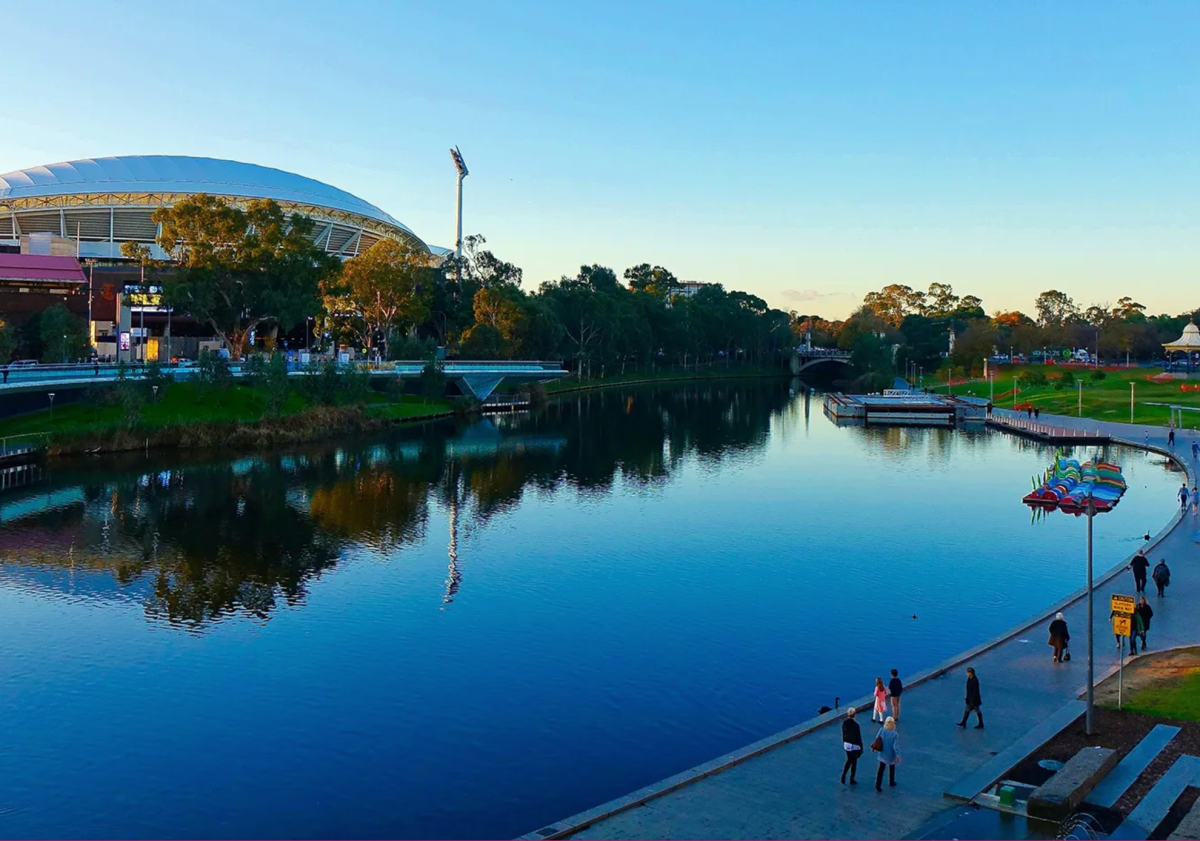This year’s Creative Spaces Summit was designed to interrogate the role of galleries as spaces for community activation in addition to their traditional roles as places for creativity and cultural interactions. Hosted by the Regional Galleries Association (RGA) of South Australia, and held at the exciting new Lot Fourteen innovation centre on North Terrace, Adelaide’s premier cultural boulevard, the Summit offered three days of collegial networking, creative and professional stimulation, along with a range of social activities too. From the highlight keynote addresses to the more intimate workshops and breakout sessions, the program offered a stimulating mix of ideas and provocations. As the first National Summit to be held since 2019 (for obvious reasons…) this was also a valuable opportunity for delegates to regroup, reconnect, and meet friends both old and new. Following are a few highlights.
Gathered around the core sentiment of “Let’s create a new dialogue” the program offered safe spaces for conversation and thought, for exploration and examination. Many of the presentations addressed the multiple faces of galleries, especially those in regional and more remote areas, where they play important roles as key community organisations. They are trusted by the local people and also contribute to economic growth, education, social connectedness, and tourism, as well as being community partners in health and well-being.
The Summit gave delegates an opportunity to consider the role of cultural infrastructure in practical and proactive ways, sometimes thinking beyond the gallery walls to being, or becoming, part of dynamic collaborative precincts. Questions around aims and outcomes, and about managing differing ambitions with a shared purpose and greater synergy, created food for thought.
Big conversations
‘We had almost 200 attendees from across Australia representing both regional and urban-based galleries,’ says Summit organiser Maz McGann, principal of Play Your Part, an arts, culture, community, and heritage consultancy. ‘They included everyone from volunteers in small community run spaces right through to the Director of the Art Gallery of NSW. We welcomed artists, curators, arts workers, academics, volunteers, students and administrators.’
Speaking at the opening of the Summit, McGann told the audience ‘we encouraged all our speakers to be provocative because we need to have those big conversations’. And they did not disappoint!

The first keynote address was a powerful presentation by Sally Scales, a First Nations advocate, artist and cultural leader. Scales is a Pitjantjatjara woman who has worked with the APY Art Centre Collective since 2013 and is a member of the Federal Government’s Referendum Working Group. She gave a passionate presentation about the Uluru Statement from the Heart and the coming Voice to Parliament referendum, leaving the delegates with a challenge: ‘We need you to be braver; we need you to be stronger.’ This was definitely one of the Summit highlights and it had only just begun. As McGann said later, ‘Sally Scales is truly a force of nature in the most amazing way.’
The speakers across the three days comprised a mix of arts academics and gallerists alongside practising artists talking about their lives and their work. There was a clear emphasis on First Nations presenters including Uncle Wes Marne from the Elders in Residence program at the Blacktown Arts Centre and emerging artist Kristal Matthews, a Ngunawal woman who runs arts business Wilay Designs with her sister Jazz.
Art in the wild
Local Adelaide artist Tom Borgas spoke about his passion for doing work in non-traditional spaces, saying, ‘Art is too important to only exist in galleries.’ His large-scale sculptures and installations can appear in the most unusual outdoor settings, often for just a very brief period of time. And he has recently been commissioned to paint the motorway infrastructure on a major Adelaide road redevelopment. Acknowledging that artists also have to eat and pay the rent he said candidly, ‘I’ve found out recently that there’s a lot of money in painting murals, especially if you do the work yourself.’

Acclaimed Melbourne artist Rone is a celebrated name in the international street art scene. His presentation, entitled All the world is a gallery, offered an insight into the intricacies of creating his monumental works. ‘He showed complexity, creativity and incredible problem-solving skills, along with an imagination to die for!’ said McGann. ‘What an extraordinary artist.’
The importance of traditional craft skills was not overlooked. These were front and centre in the Mark Making panel discussion, leaving the delegates with the understanding that nothing quite replaces the feeling of actually getting your hands dirty!
The future is an invitation
Many of the Summit presentations addressed the challenges and opportunities presented by new technology. Film producer and tech entrepreneur Anton Andreacchio explained some of the major changes on the horizon, but also acknowledged that often we don’t really know what’s coming.
Andrew Meares, a Walkley Award-winning photojournalist who is now a lecturer in Cybernetic Futures at ANU, gave a fascinating look at the intersection between technology, creativity and culture. Turning our fear on its head, he said ‘the future is an invitation’, probably my favourite take-away from the Summit. As he says, ‘The future is being built in the tumultuous present.’
There was a mutual sharing throughout the program of experiences and insights into incorporating technology at all levels and innovative ways to engage with the audiences of today and tomorrow. In an era when technology is rapidly changing how people engage with art, the Summit aimed to unbundle some of the challenges and opportunities ahead as we navigate changes in the gallery space and traditional exhibition formats.
For Robert Heather, executive director of the Art Gallery Society at the Art Gallery of New South Wales (AGNSW), this is about managing the expectations of the organisation’s 30,000-plus members. Even seemingly simple innovations, such as switching from printed catalogues and magazines to a fully digital offering, can have its challenges when your members are of a certain demographic. But those members raise between $3 million and $4 million annually, of which around a million dollars goes back to AGNSW to fund new acquisitions. Interestingly, Heather said he spoke at the very first Regional Galleries Summit in Cairns back in 1997.
Prodding the dinosaur
Day Two of the Summit featured a very valuable session on The Business of Galleries – Funding, Engagement and Partnerships. Ben Koop, Principal and Founding Partner of Alinea Group, has an outstanding track record of delivering results on major urban renewal projects many of which incorporate high-profile cultural sectors, such as HOTA on the Gold Coast. After a career in commercial real estate, he’s well-placed to admit that ‘the real estate industry is dominated by dinosaurs’. He says his role now is ‘to prod the dinosaur’ into thinking beyond the traditional development parameters to create multidimensional offerings where arts and culture can take a central role.

Another highlight of Day Two was the launch of CoUNTess: Spoiling Illusions since 2008 (and yes, the capitalisation is absolutely intentional). This new book comes out of the CoUNTess Blog and Report, which reveal the truth about gender inequity in the Australian art world. Co-authors Professor Melinda Rackham and Elvis Richardson gave a stirring presentation on the position of women and non-binary practitioners in art. They urged the audience to curate their exhibitions ‘with curiosity, confidence and cunning’. At 200-plus beautifully designed pages, this important publication deserves a place on everyone’s bookshelf.
Issues of fostering inclusivity, diversity and access were raised again and again as being central to the role of galleries in society. Ideas and initiatives to promote marginalised voices and engage with under-represented communities were set free for delegates to envision ways they could implement similar actions in their own spaces. The Summit also set the stage for ongoing dialogue about the evolving role of public galleries in the contemporary world.
Looking ahead
As Regional Arts Australia (RAA) celebrates its 80th birthday this year, CEO Ros Abercrombie quoted the organisation’s founder as saying, ‘I can’t separate art from life – they are one and the same’. So what does that mean for RAA as it looks to the next 80 years? The fabric of our cultural and creative ecology is built on community confidence, creative confidence and business confidence, said Abercrombie. ‘Looking forward, we need to find new ways to translate investment into value.’

Another passionate speaker, Dr Tully Barnett from Flinders University, also spoke about the value of arts and culture in society, something she’s been working on for at least a decade. ‘There are no useful ways of measuring value in arts and culture,’ she said emphatically, cautioning that metrics such as attendance numbers and ticket sales only tell part of the story. Importantly, she urged delegates to be careful about the ways they communicate the value of what they do. ‘If we do not measure what we value, we will come to value only what we can measure.’
Fostering lasting connections
One of the biggest benefits of attending the Summit can’t actually be found in the program – it’s the fostering of lasting connections with those around you, helped along by the excellent in-house catering and well-chosen social events. These networking opportunities provided a platform for everyone to share ideas, exchange experiences, reflect on what they’d seen and heard, and form valuable collaborative alliances. There was a real feeling of camaraderie and mutual support – “we’re all in this together” – that infused the event with a sense of purpose and belonging.
Leaving a lasting impact
The Creative Spaces Summit really was an invigorating celebration of creativity, innovation and artistic expression. Over three busy days, artists and thought leaders in the arts shared their journeys and offered insights into harnessing artistic potential for positive social change. The Summit championed a range of diverse voices in the art world and explored many important themes, including art as a tool for advocacy and activism, and as a driver of social change.
Read: Regional gallery conference tackles the pressure points
The themes of art and culture, community and identity, place and people will leave a lasting impact and will resonate long after we’ve all gone home. And I’m quite sure many delegates went back to their galleries and studios with quite a few shiny nuggets of wisdom and a renewed confidence about their place in the world. If the Creative Spaces Summit offers a snapshot of today’s cultural landscape, you’d have to think it’s in good hands.
I’ll leave the last word to Andrew Meares who told the delegates: ‘As I look at this cohort it confirms my thesis that the world is run by women who turn up and get things done.’ Cue enthusiastic applause!





